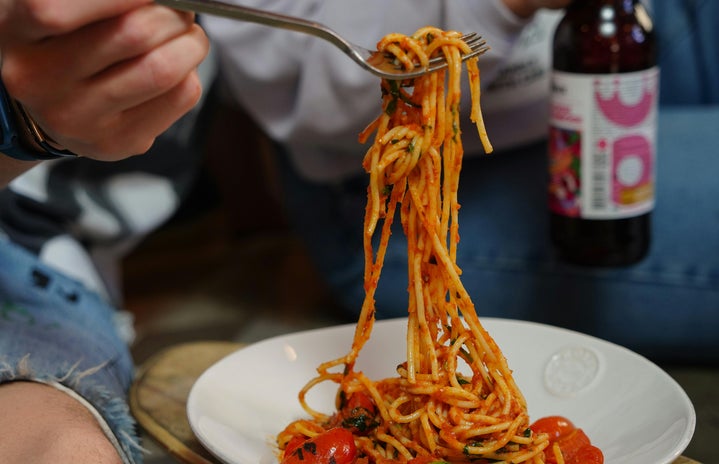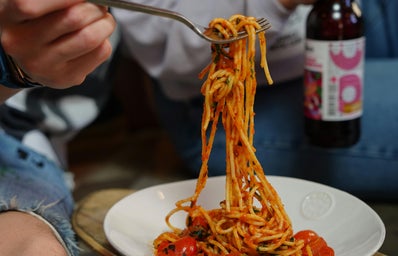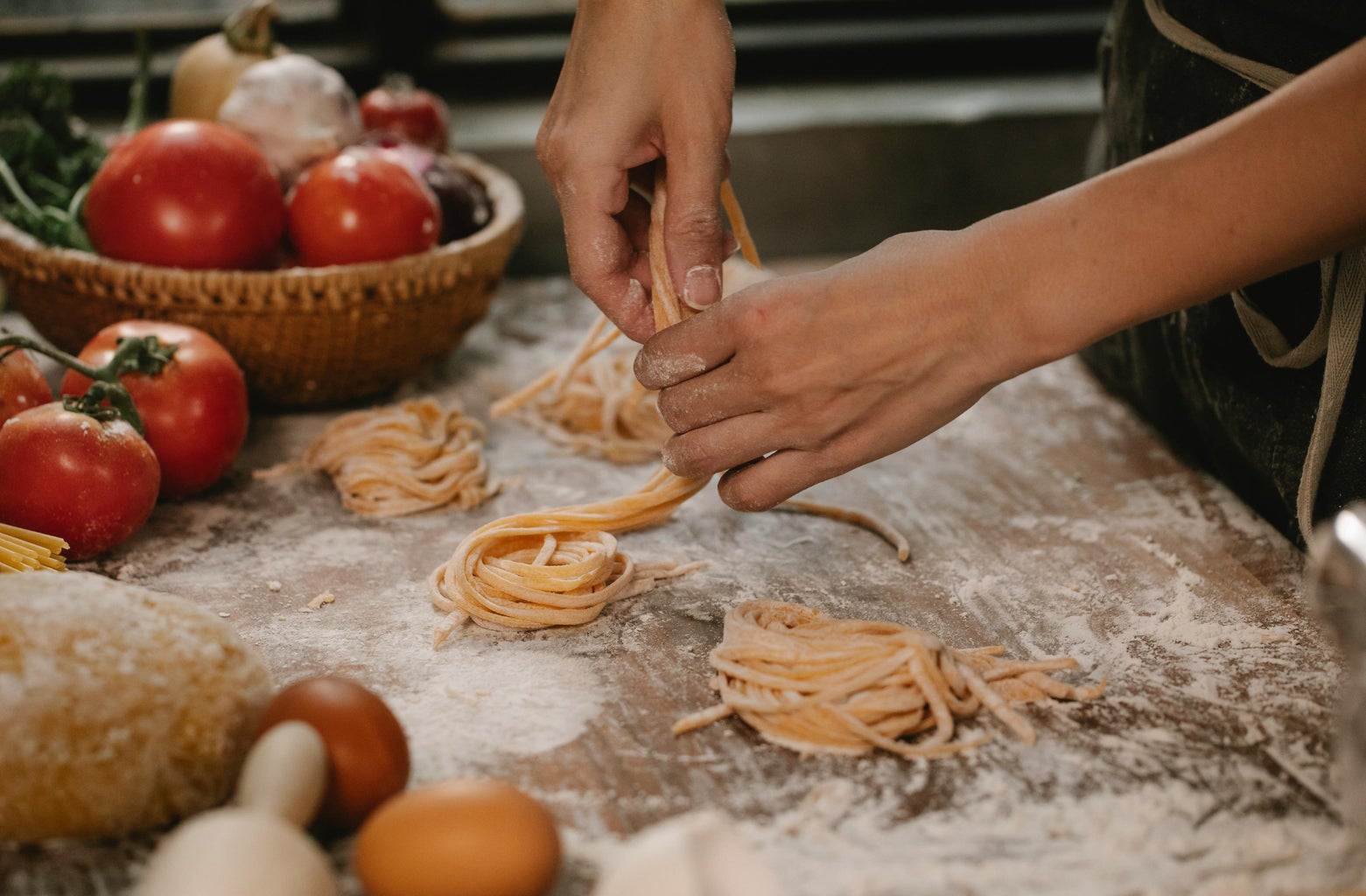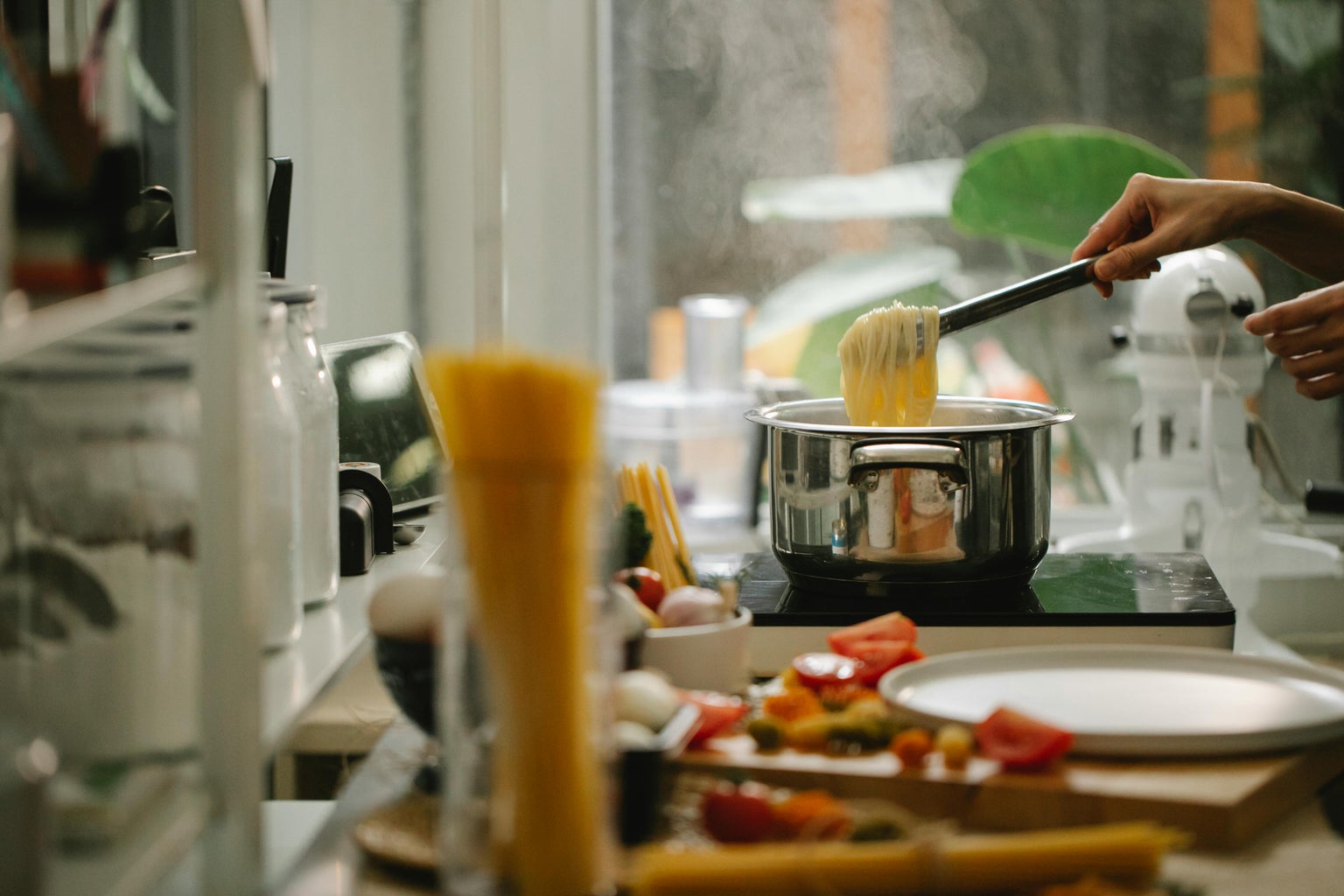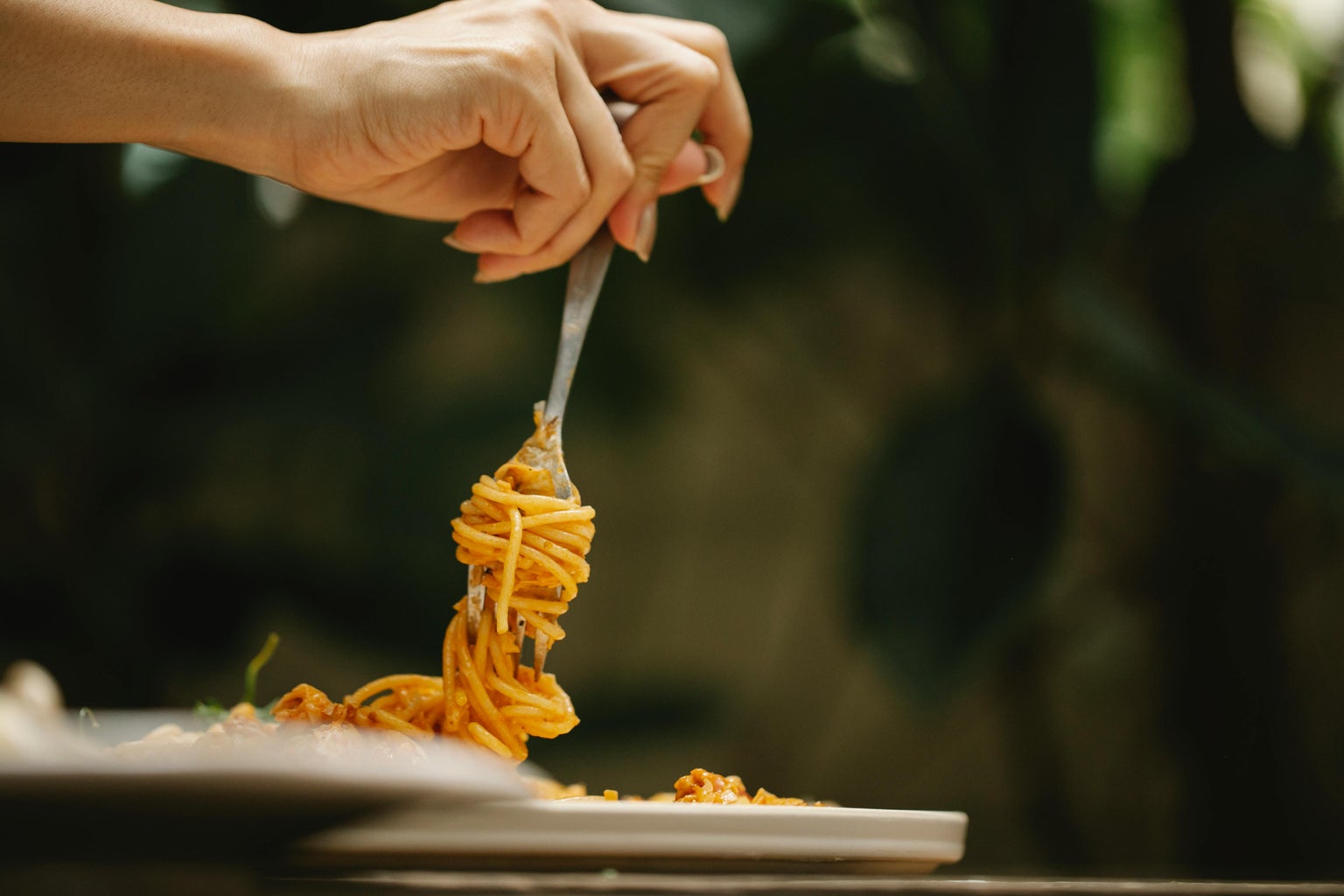As we move through an increasingly hectic part of the semester, I’ve been thinking about ways to care for myself amid the demands of work and school. I’ve found myself, as I so often do, turning to the kitchen for insight.
In Small Fires: An Epic in the Kitchen, Rebecca May Johnson attends to the relationship between being in the kitchen and taking care of ourselves. Recounting her beginnings as a young adult learning to cook, Johnson details the first, second, and even hundredth time she cooks a beloved pasta recipe from renowned Italian cook and writer Marcella Hazan. Her work makes clear the benefits of following and repeating recipes, reminding us that the best way to care for ourselves in busy times is often by leaning into routine, simplicity, and beauty.
As Small Fires reminds, repetition in the kitchen is a way to develop skills, hone your intuition, and discover what best suits your taste. As Johnson describes adapting the recipe for her time, her pantry, and the people she is cooking for, she also speaks to the benefits of having simple, versatile recipes that can carry you through busy, demanding, or unexpected times.
Not unlike Johnson, I discovered the joys of Marcella Hazan’s recipes as a young undergraduate adapting to the pace of getting groceries and making myself dinner every night. It’s at about that time that I started devoting myself to learning about homemade tomato sauces made from canned, and occasionally fresh, tomatoes. While homemade sauces do require a little extra effort, they offer a huge flavour and texture pay off. Since ingredients like garlic, salt, and canned tomatoes (not to mention pasta) tend to be pretty affordable, they can be the foundation for some pretty cost-effective meals.
I came across the recipe for Marcella Hazan’s Tomato Sauce for the first time while reading Ruth Reichl’s memoir Save Me the Plums a few years ago. Since then, it has become a regular staple in my tomato sauce rotation. Composed of nothing more than a can or two of crushed tomatoes, a Spanish onion (peeled and cut lengthwise), some butter, and some salt, it makes for an easy and deeply satisfying accompaniment to pasta (or even homemade pizza).
For a punchier, garlic-laden, and dairy-free version of tomato sauce, I also appreciate (and regularly follow) Eric Kim’s recipe for Pasta al Pomodoro. While Kim uses fresh tomatoes that he later pulverizes, I’m partial to making this recipe with canned crushed tomatoes or passata (a much more fluid product more closely resembling fresh tomatoes). Similarly to Johnson, I’ve come to adapt this recipe to my tastes and my pantry over time, allowing the familiar recipe to act as a set of guiding principles, not make-or-break instructions.
So, whether you try your hand at these recipes or return to your own well-loved recipe, I hope you might find some solace in routine and repetition this semester. And if all this talk of pasta is making you crave a warm, saucy, slightly acidic bowl of it, I say lace up those running shoes, grab that reusable bag, and head to the grocery store to get everything you need for your next luscious pasta dinner. Whether you bask in the glory of leftovers or invite a friend or two to join you, lean into the ritual of being in the kitchen. It has so much to offer.
